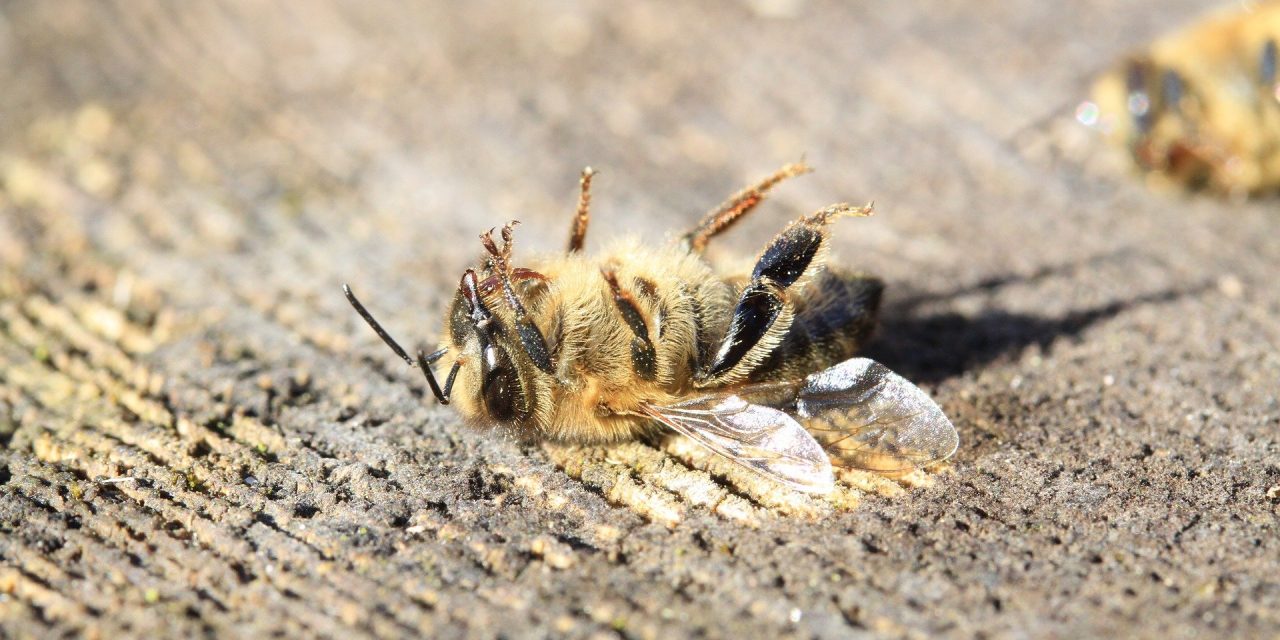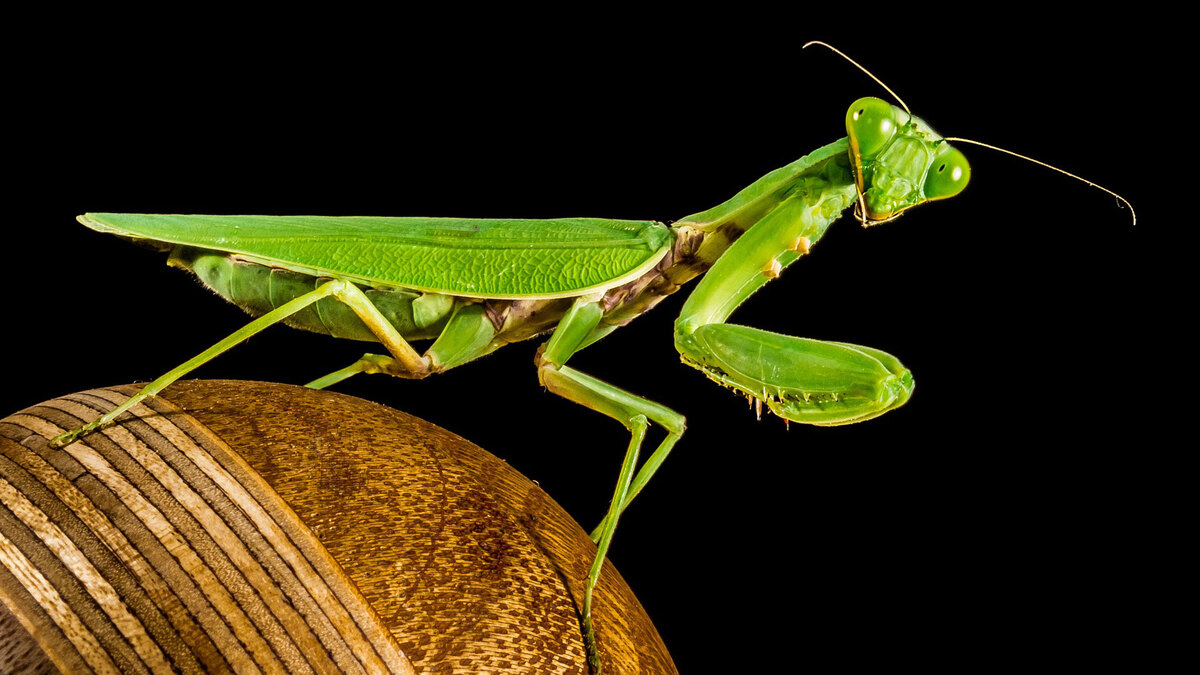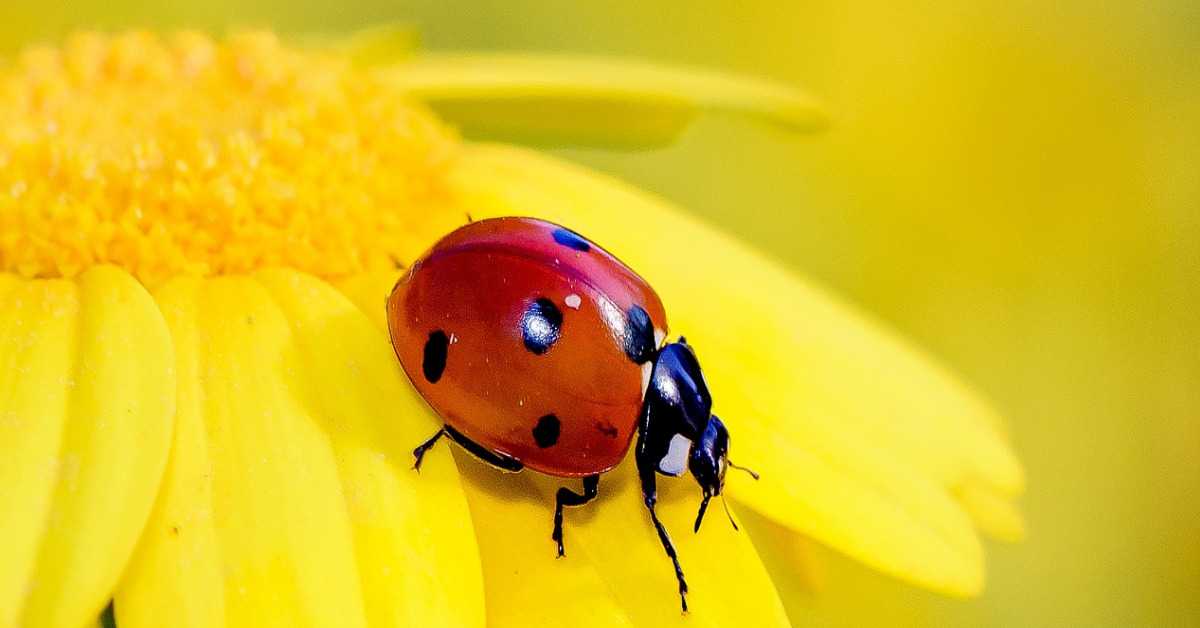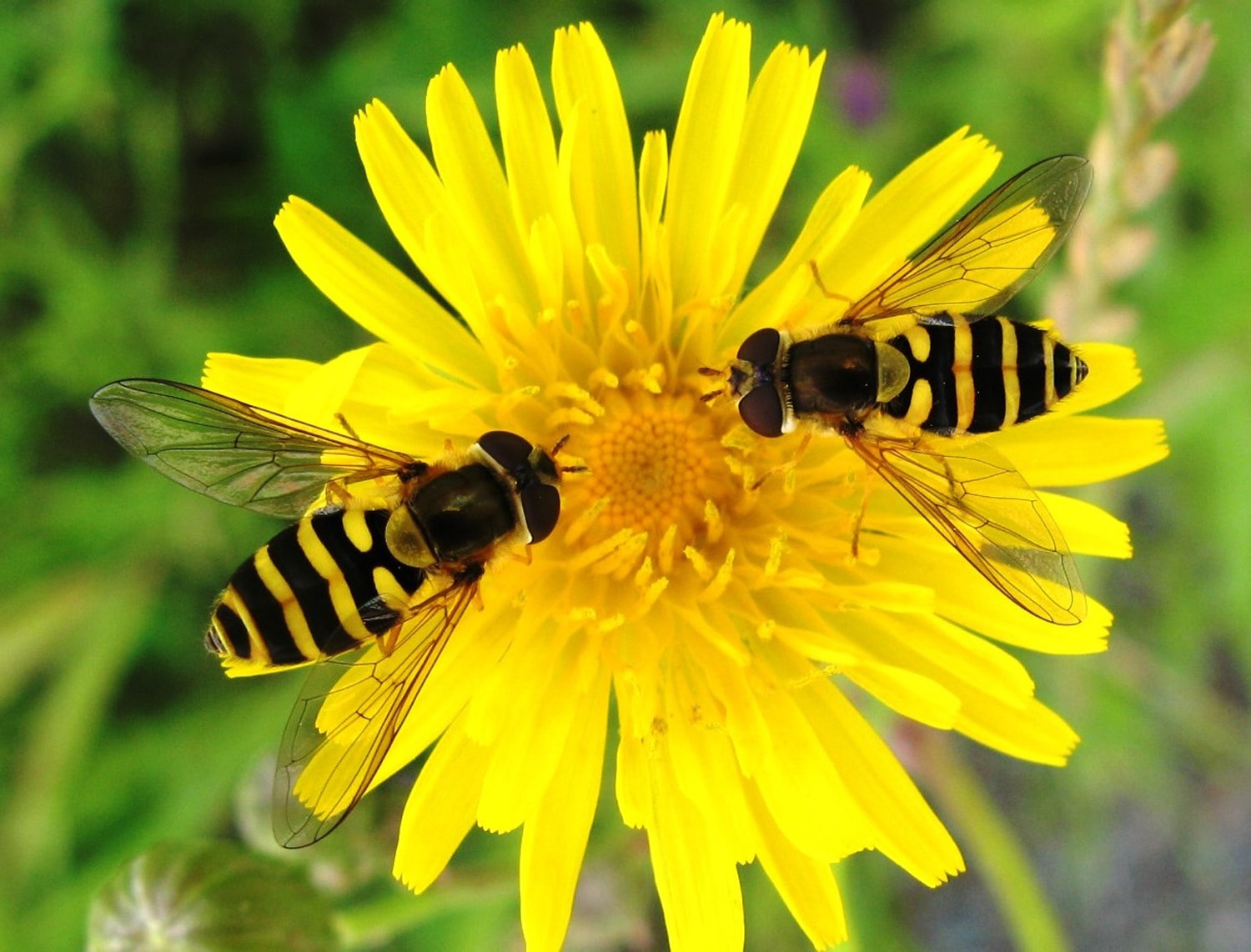Home>Gardening News and Trends>Latest News>Why Do Insects Die On Their Back


Latest News
Why Do Insects Die On Their Back
Modified: January 22, 2024
Find out the latest news on why insects mysteriously die on their backs. Uncover the intriguing reasons behind this perplexing phenomenon.
(Many of the links in this article redirect to a specific reviewed product. Your purchase of these products through affiliate links helps to generate commission for Chicagolandgardening.com, at no extra cost. Learn more)
Table of Contents
Introduction
Have you ever wondered why you often find small insects lying helplessly on their backs, motionless and seemingly lifeless? It’s a common sight, but have you ever stopped to think about the reasons behind this peculiar behavior? In this article, we will delve into the mysteries of why insects often end up on their backs and explore the various factors that contribute to this phenomenon.
While it may seem like a simple and insignificant occurrence, the position in which insects find themselves can provide valuable insights into their anatomy, physiology, and the complex relationships they have with their environment. By understanding why insects exhibit this behavior, we can gain a deeper understanding of their intricate biology and the challenges they face in their daily lives.
Insects, with their exoskeletons and intricate body structures, are uniquely adapted to thrive in diverse environments. However, their small size and lightweight nature make them susceptible to the forces of gravity. Additionally, insects have reflexes and instincts that play a role in their movement and orientation within their surroundings. These factors, combined with external environmental factors, often result in insects ending up on their backs.
Throughout this article, we will explore the anatomy and physiology of insects, the role of gravity in their predicament, their reflexes and instincts, and how environmental factors factor into the equation. We will also touch upon the interactions between insects and their predators, as well as the defense mechanisms they employ to survive.
So, let’s dive into the world of insects, unravel the mysteries of why they end up on their backs, and gain a newfound appreciation for these small but fascinating creatures.
Anatomy and Physiology of Insects
To understand why insects often find themselves on their backs, it’s crucial to explore their unique anatomy and physiology. Insects have a versatile body structure that allows them to adapt and thrive in various environments.
One significant feature of insects is their exoskeleton, a tough outer covering composed of chitin. The exoskeleton provides protection and support, serving as a sturdy framework that holds the insect’s body together. However, this rigid structure also limits their flexibility and mobility. Unlike humans and other vertebrates with an internal skeleton, insects must rely on their jointed appendages for movement and locomotion.
Another crucial factor is the distribution of the insect’s body mass. Insects have a high concentration of weight towards their head and thorax, while their abdomen tends to be lighter. This uneven weight distribution can result in destabilization and lead to insects toppling over onto their backs more easily.
In addition to their body structure, insects possess specialized sensory organs, such as antennae, compound eyes, and sensory hairs. These sensory organs play a crucial role in helping insects navigate their environment and detect potential threats or food sources. However, they can also be a factor in insects ending up on their backs. For example, if an insect becomes disoriented or loses its balance due to a sudden change in sensory information, it can lose control and end up on its back.
Furthermore, the internal physiology of insects can also contribute to their vulnerability. Insects have an open circulatory system, where their hemolymph, a fluid analogous to blood, is pumped through a series of tubular structures called hemocoels. This system relies on the insect’s movements and muscle contractions to circulate the hemolymph. If an insect ends up on its back, it can disrupt the natural flow of hemolymph, impacting its vital functions.
Overall, the unique anatomy and physiology of insects, from their exoskeletons to their specialized sensory organs and internal systems, can all contribute to their precariously balanced state and their tendency to end up on their backs. Understanding these factors allows us to appreciate the intricate design of these tiny creatures and sheds light on the challenges they face in their daily lives.
The Role of Gravity
Gravity plays a significant role in the behavior and positioning of insects. As terrestrial creatures, insects rely on gravity to navigate their environment and maintain their balance. However, their small size and lightweight nature make them particularly susceptible to the forces of gravity.
One factor is the relative size and weight of an insect’s body in proportion to its legs. Insects have a relatively high center of gravity due to the concentration of their body mass towards the front. When an insect loses its balance or encounters a disruption, such as a sudden movement or external force, its body may become unbalanced, causing it to topple over onto its back.
Additionally, the distribution of weight in an insect’s body can contribute to their vulnerability. Insects typically have a lighter abdomen compared to their head and thorax. This uneven weight distribution can further destabilize an insect, making it easier for them to lose balance and end up on their backs.
Moreover, the surface tension of water can also play a role in insects ending up on their backs. Due to their small size and lightweight nature, insects rely on surface tension to stay afloat on water. However, if an insect’s body becomes wet or there are disruptions on the water’s surface, such as ripples or waves, the surface tension may be compromised, causing the insect to sink or lose its equilibrium and roll over onto its back.
Gravity, therefore, acts as a constant force that insects must contend with in their day-to-day lives. While it provides essential cues and stability for their movement and orientation, it can also pose challenges and lead to insects finding themselves in vulnerable positions, often on their backs.
Understanding the role of gravity in the lives of insects highlights the delicate balance that these creatures must maintain in their environments. It reminds us of the intricate interplay between physical forces and biological adaptations, and deepens our appreciation for the remarkable ways in which insects navigate their world.
Insect Reflexes and Instincts
When it comes to the behavior of insects ending up on their backs, their reflexes and instincts play a crucial role. Insects have developed a range of innate responses to stimuli, which can influence their orientation and positioning within their environment.
One reflex commonly observed in insects is the righting reflex. When an insect finds itself on its back, it will often exhibit a series of coordinated movements to flip itself back onto its feet. This reflex involves a combination of leg flailing, body twisting, and rolling motions. By engaging in these movements, the insect can regain its upright position and resume normal activities.
In addition to the righting reflex, insects also possess a variety of instinctual behaviors that influence their positioning. For instance, many insects are phototropic, meaning they are attracted to light sources. This natural inclination can lead them to fly towards lights or crawl on surfaces where light is present, often ending up on their backs if they misjudge their orientation.
Furthermore, some insects have specialized behaviors that contribute to their tendency to end up on their backs. For example, certain species of beetles have a behavior known as “thanatosis,” or playing dead, in response to threats. When threatened, these beetles will flip onto their backs and remain motionless, mimicking the appearance of a dead insect. While this behavior serves as a defense mechanism against predators, it also means that these beetles frequently find themselves in the upside-down position.
Environmental cues can also trigger specific reflexes and instincts in insects. For instance, sudden changes in temperature or humidity can cause insects to exhibit erratic movements or lose their balance, leading to them ending up on their backs. Similarly, vibrations from nearby disturbances, such as footsteps or the movement of objects, can startle insects and disrupt their equilibrium.
The reflexes and instincts of insects are remarkable adaptations that have evolved to help them navigate the world and respond to various stimuli. While these innate responses serve important functions, they can also result in insects frequently finding themselves in vulnerable positions, including on their backs.
By exploring the complex interplay between insect reflexes, instincts, and their environment, we gain a deeper understanding of the behaviors and survival strategies of these remarkable creatures. It reminds us that even the simplest actions can be driven by intricate biological mechanisms.
Environmental Factors
The environment in which insects live plays a significant role in their behavior and positioning. A variety of factors, both natural and human-induced, can influence why insects end up on their backs.
One key environmental factor is the terrain itself. Uneven or sloped surfaces can make it more challenging for insects to maintain their balance and stability. For instance, insects traversing hilly or rocky terrains may be more prone to rolling or slipping onto their backs.
The presence of obstacles and hazards within the environment can also contribute to insects ending up on their backs. In urban areas, for example, insects may encounter sidewalks, curbs, or other artificial structures that disrupt their movement and cause them to become inverted. Similarly, natural features such as fallen branches, vegetation, or uneven ground can pose challenges and increase the likelihood of insects toppling over.
Furthermore, weather conditions can greatly impact an insect’s ability to maintain their upright position. Strong winds can buffet and destabilize insects, making it difficult for them to stay on their feet. Likewise, heavy rain or snow can create wet and slippery surfaces, increasing the risk of insects losing their balance and ending up on their backs.
Human activities and interventions can also influence the likelihood of insects becoming inverted. For instance, pesticide applications can disrupt an insect’s normal behaviors and sensitivities, potentially leading to disorientation and loss of balance. Similarly, the use of certain landscaping practices or the presence of certain structures can create artificial environments that make it more challenging for insects to navigate successfully.
Overall, the environmental factors in which insects exist interact with their biology and behavior, contributing to their propensity to find themselves on their backs. Recognizing the role of the environment invites us to consider the complex web of interactions between insects and their surroundings, and the challenges they encounter as they strive to survive and thrive.
Predation and Defense Mechanisms
Insects are under constant threat from predators that see them as a potential source of food. The risk of predation influences their behavior and can contribute to why insects end up on their backs.
When faced with a predator, insects employ a variety of defense mechanisms to increase their chances of survival. One common defense strategy is camouflage, where insects blend in with their surroundings to avoid detection. Insects that rely on camouflage may find themselves on their backs as a result of their attempt to remain inconspicuous.
Another defense mechanism employed by insects is mimicry. Insects mimic the appearance or behavior of other species, such as toxic or venomous predators, to deter would-be attackers. Although effective, mimicry can also lead to insects ending up on their backs if they mimic the behavior of an inverted predator.
Some insects resort to physical defenses when confronted with a predator. For example, certain beetles have the ability to release defensive chemicals when threatened. These chemicals can be harmful or irritating to predators, causing them to release the beetle rather than risk injury or discomfort. The act of releasing these chemicals, however, can result in the beetle flipping onto its back in the process.
Additionally, many insects possess the ability to feign death when confronted by a predator. Known as “playing dead” or thanatosis, this behavior aims to deceive the predator into thinking the insect is no longer a threat. In order to convincingly play dead, insects may instinctively fall onto their backs and remain motionless until the potential threat has passed.
In some cases, the predator itself may be the reason why an insect ends up on its back. Certain predators, such as spiders, may immobilize their prey by flipping them onto their backs, making it easier to capture and consume them.
The interplay between predation and defense mechanisms contributes to the prevalence of insects ending up on their backs. It emphasizes the constant struggle for survival in the insect world and showcases the intricate strategies employed by these small creatures to evade their predators.
Conclusion
Insects ending up on their backs is a common but intriguing phenomenon that can be attributed to a combination of factors. The unique anatomy and physiology of insects, their reflexes and instincts, the role of gravity, environmental factors, and the interplay between predation and defense mechanisms all contribute to this behavior.
The anatomy of insects, including their exoskeletons, body mass distribution, and specialized sensory organs, plays a role in their susceptibility to imbalance and tipping onto their backs. Insect reflexes and instincts, such as the righting reflex and phototropism, can influence their orientation and positioning within their environment.
Gravity acts as a constant force that insects must contend with. Their small size and lightweight nature, combined with the concentration of weight towards the front of their bodies, can make them more prone to losing balance and toppling onto their backs.
Environmental factors, such as uneven terrain, obstacles, and weather conditions, provide challenges for insects to maintain their upright position. Additionally, human activities and interventions can create artificial environments that disrupt an insect’s normal behaviors and contribute to them ending up on their backs.
Predation and defense mechanisms also play a role. Insects have developed a variety of strategies to avoid becoming prey, including camouflage, mimicry, and playing dead. However, these tactics can also result in insects finding themselves overturned.
Understanding the reasons why insects often end up on their backs offers insights into their biology, behaviors, and interactions with their environment. It highlights the remarkable adaptations of these tiny creatures and the challenges they face in their quest for survival.
Next time you come across an insect lying helplessly on its back, take a moment to appreciate the intricate mechanisms at play. These small creatures have mastered the art of finding balance in a world where even the simplest of movements can have significant consequences.










